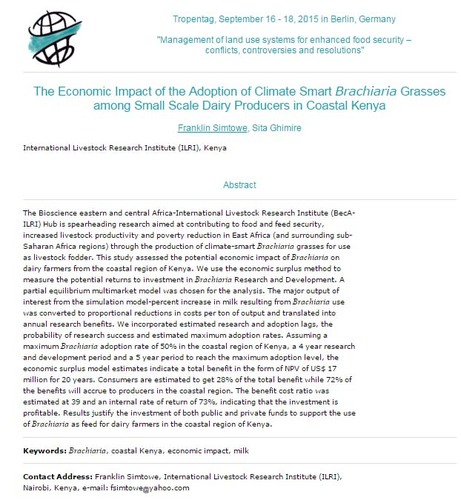The economic impact of the adoption of climate smart Brachiaria grasses among small scale dairy producers in coastal Kenya
Abstract
The Bioscience eastern and central Africa-International Livestock Research Institute (BecA-ILRI) Hub is spearheading research aimed at contributing to food and feed security, increased livestock productivity and poverty reduction in East Africa (and surrounding sub-Saharan Africa regions) through the production of climate-smartBrachiaria grasses for use as livestock fodder. This study assessed the potential economic impact of Brachiaria on dairy farmers from the coastal region of Kenya. We use the economic surplus method to measure the potential returns to investment inBrachiaria Research and Development. A partial equilibrium multimarket model was chosen for the analysis. The major output of interest from the simulation model-percent increase in milk resulting from Brachiaria use was converted to proportional reductions in costs per ton of output and translated into annual research benefits. We incorporated estimated research and adoption lags, the probability of research success and estimated maximum adoption rates. Assuming a maximum Brachiaria adoption rate of 50% in the coastal region of Kenya, a 4 year research and development period and a 5 year period to reach the maximum adoption level, the economic surplus model estimates indicate a total benefit in the form of NPV of US$ 17 million for 20 years. Consumers are estimated to get 28% of the total benefit while 72% of the benefits will accrue to producers in the coastal region. The benefit cost ratio was estimated at 39 and an internal rate of return of 73%, indicating that the investment is profitable. Results justify the investment of both public and private funds to support the use of Brachiaria as feed for dairy farmers in the coastal region of Kenya.

